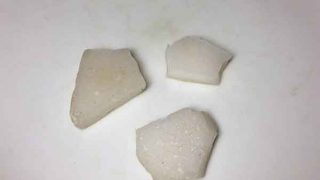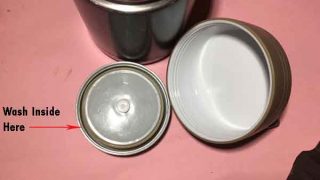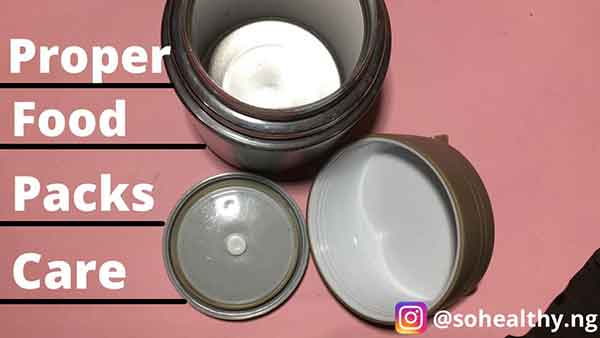Did you know that how you wash the food packs your child takes to school could affect your child?
Mothers do their best to get the best of food packs for their kids. Their choices are often amazing.
But not so many of them are aware that it could be a source of concern.
Endlessly, Tonia wonders how her child gets the infection that hospitals often find each time she falls ill.
The last time, the child was so ill and pale and the infection degree was high.
She had suspected the child’s school and had raised concerns about the reoccurring situation.
Tonia has a 9 to 5 job and night arrival at home is a regular routine.
Everything about caring for her child’s food pack is in the care of her maid.
One of the least things she concerns herself with is her daughters food packs.
The maid washes them, but whether she does it right, is one though that has not crossed Tonia’s mind.
Little did she know that the food packs had caused her sleepless nights at different times at the hospital.
First, the maid washes the food packs with detergents.
She is not aware that detergents have a level of toxic materials in them that could be delicate to anyone’s health.
This use of detergent in washing plates is also same in most homes.
‘Toxicity Of Detergents’
Detergents are very available in Nigeria. They come in small sachets that are really affordable.
A 2011 study that investigated the ‘Toxicity of Detergents’ in Nigeria recorded amazing findings parents and everyone should know about.
The researchers ingested 20 mice (about 30 days old) with detergent solutions. The mice were grouped into five sets, comprising of five mice each.

At the end, rats that got some concentrations of the detergent had significant difference in mean weight.
Also, the hematology analysis of the exposed mice showed marked reduction in the packed cell volume, hemoglobin, white blood cells, red blood cells and total protein.
Furthermore, the blood of the exposed mice had dose-dependent hypochromasia, macrocytosis, microcytosis, eosinophilia and arisocytosis.
Internal Organs Injuries
A significant difference also exists between the mean blood parameters of the control mice and the mean blood parameters of the mice exposed to the various concentrations of the detergent.
According to the study, detergents could also cause internal organ injuries.
“The internal organs (heart, kidney, liver and reproductive organs) of the exposed mice showed marked histological changes compared to the control mice and the extent of the injuries increased with the concentrations of the detergent solutions.
“The results of the research highlight health hazards of detergent exposure and underscore the needs for proper handling and disposal of detergents.”
What To Do About Detergents
It is advisable that you use milder soaps with less chemical agents when you wash your plates.
But if you cannot keep up with this, each time you use detergents to wash your child’s food packs, throw some alum in the water rinse the plates with.
This removes the toxin from the detergent that often rests on the plate.
You must have noticed that sometimes the fragrance of this detergents stays on the plate hours after you washed them.
Using alum to rinse thoroughly will stop this from happening.
Potassium alum has a compound that has antiseptic and astringent properties. It also helps reduce inflammation.
Appropriate Way To Wash Food Packs
There is also a part of the food packs that Tonia’s maid give less attention to most times.
It is the inner part of the food pack cover.
Although, the process of washing this inner part of the food pack cover is not easy, it is important to wash it properly.
You have to use another object that can fit into the place with the sponge pushed in to wash that hidden area.
Do You Know These School Time Breakfasts That Keep Children Smart And Healthy?
See image below for this very important part you must wash properly.
Sometimes, food particles could hide there and could stay for days without being noticed.
Basically, a deliberate effort must be made to clean this part of your child’s food pack.
This is because when it holds food particles for just one day, bacteria will breed there.

This bacteria then finds its way into the child’s food the next time food item is added to the pack.
Germs of that nature make children whose immune system may have been weakened by the effect of toxins fall ill.
Do your best as a mum to keep an eye on how your child’s food pack is washed and handled.
How To Sterilise Children’s Food Packs Daily
Finally, it is advisable to also sterilise your child’s food packs daily with hot water and alum or salt.
Boil your drinking water and pour in a bowl, then place the food items in the water.
Ensure they are submerged.
You May Also Love To Know Your BMI And See Why Knowing It Matters
Pour some amount of water inside the food container and allow it stay there for some minutes before rinsing it.
This will sterilise the food packs and further ensure that bacteria that may have escaped the initial process are taken care of.
If you find this article helpful, please, share with your friends or loved ones to enable them know how to protect their children from bacteria and toxins that could cause illness.



